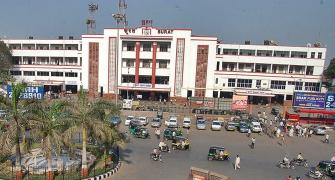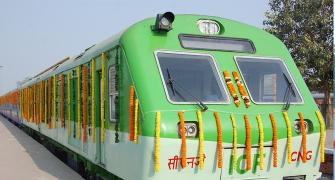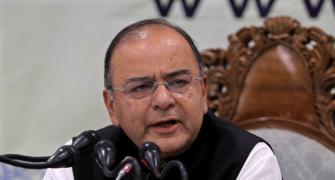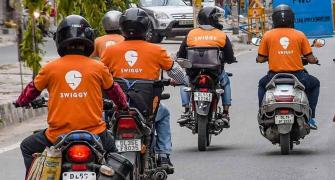Even as several trains have more than 200 waitlisted passengers every day, running some trains with so many vacant seats is a criminal waste of the scarce resource, says Ramakrishnan T S.
Part 1: A load too heavy for the Indian Railways
Rationalise passenger transport to gain freight traffic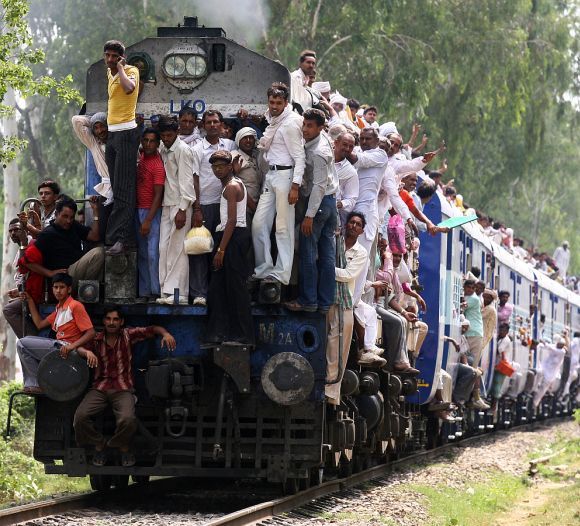
The capacity released thus would help the Indian Railways move freight traffic at an average speed of 50 km per hour. This would enable it to make inroads into transportation of non-bulk items.
To overcome the plateauing of freight traffic, the Indian Railways’ (IR) Hobson’s Choice is to increase transportation of non-bulk freight.
The larger issue for IR is providing faster and more reliable end-to-end connectivity than road transport, rather than a comparison of its freight transport fares with that of road transport.
In India, a truck travels about 280 km in a day; freight trains cover about 576 km (at an average speed of 24 km per hour) during the same period.
However, for non-bulk freight, less frequency, lack of facility to transport smaller consignments, cost and uncertainty associated with last-mile connectivity in rail freight transport mean that truck transport has remained competitive.
The issue becomes much larger for IR with GST. With the removal of state border checkpoints, a truck is expected to travel about 440 km in a day.
Hence, to capture non-bulk traffic, IR needs to increase the average speed of its freight trains from 24 kmph to at least 50 kmph.
There is no restriction on the part of IR’s trains (either passenger or freight) to reach a maximum speed of about 90 kmph on any section of the network -almost all stretches support that speed.
The issue is about priority in accessing track infrastructure and hence, the associated reduced average speed.
Although about 70 per cent of revenues from transport for IR comes from freight transport, it gets the least priority in the waterfall model of allowing access to tracks.
Also, it uses only about 33 per cent of the IR’s network capacity.
Luxury trains such as Shatabdi, Rajdhani, Duronto travelling at an average speed of 80 to 100 kmph, Express/Mail trains with an average speed of 50 to 60 kmph and ordinary (passenger) trains running at an average speed of 36 kmph get first, second and third preference, respectively. Freight trains come next in the order of preference.
Although a detailed study would yield a blueprint for how IR could achieve both higher passenger volume and freight transport for the given network, the directions in which it should move are outlined here.
To achieve an average speed of 50 kmph, freight trains should get access to at least 50 per cent of IR’s network. Then the question is how the existing volume of passenger traffic can be maintained, if not increased, with just 50 per cent access to network capacity against the current 67 per cent access.
The share of passenger traffic in ordinary trains decreased from 37.5 per cent in 2005-06 to 28.42 per cent in 2014-15, whereas the share of faster trains increased from 62.5 per cent in 2005-06 to 71.58 per cent in 2014-15.
Since 2013-14, passenger traffic in ordinary trains has been decreasing in absolute numbers also.
Even some of the Mail/Express and luxury trains have been running without much demand for years together.
The Comptroller and Auditor General (CAG) of India has been highlighting this anomaly consistently in its earlier reports.
For instance, in its report in 2009, the CAG highlighted that 30 per cent of the newly introduced trains in nine zones between 2002-03 and 2007-08 had less than 50 per cent occupancy; yet many of them are still running.
The Bibek Debroy report submitted in 2015 mentioned that there are at least eight luxury trains, which have been running on losses.
Their losses are because of poor occupancy, as evidenced from the hundreds of tickets available even on the day of journey of these trains.
Against this backdrop, IR should go for a major overhaul of the schedule of its passenger trains.
Although there are regular official orders that instruct railway zones to identify trains with an occupancy rate of 50 per cent and reduce their services or coaches, there is no concerted effort in that direction on the basis of train data analysis.
The first measure I would recommend in this direction is that IR operate passenger trains based only on demand; populist trains introduced in the last two decades without commensurate patronage should be trimmed by reducing their frequency, if not altogether stopping them.
Even as several trains have more than 200 waitlisted passengers every day, running some trains with so many vacant seats is a criminal waste of the scarce resource of a railway network.
The second measure I would recommend is that IR estimate the total transport demand (rail, bus, car and air) in terms of O-D pairs between cities or clusters and then reschedule trains that provide faster connectivity between the cities or clusters with limited stop service at originating and terminating cities or clusters.
Although Railway Minister Suresh Prabhu has not yet yielded to the pressures of additional stops or unviable trains, more than enough damage has already been done. That damage has to be reversed.
The third measure I would recommend is that IR phase out at the earliest ordinary trains that have lost patronage and which cause congestion on a high-density network. IR locomotives take about 10 minutes to reach their maximum speed permitted on that section.
The problem with ordinary trains is that with stoppages as frequent as every 15 km, they have been decelerating even before accelerating to reach the maximum speed. The basic theme of all these measures is that trains (both passenger and freight) are supposed to continuously run all the time, except for pick-up and drop at points determined by the O-D data.
If the flab in scheduling of passenger trains is removed, according to the measures suggested here, IR could achieve the same passenger traffic - or even more - by utilising just 50 per cent of its network.
The average speed of passenger trains would shoot up by at least 25 kmph, thereby leaving 50 per cent of the network for freight traffic.
With the capacity released by this rationalising measure, freight traffic would be able to move at an average speed of 50 kmph, thus making major inroads into the transportation of non-bulk items.
Without a rationalisation in passenger transport, IR may lose high-value bulk and non-bulk freight traffic to road transport completely.
It would then have to live like a parasite on the subsidy provided by the Budget.
The author is a Doctorate in Public Systems from IIM Ahmedabad and currently teaches at TAPMI, Manipal. The views are personal.


